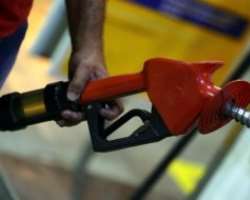Oil prices hit highest since mid-2015 as global producers agree to cut

Oil rose by as much as 6.5 percent on Monday to an 18-month high after OPEC and some of its rivals reached their first deal since 2001 to jointly reduce output to try to tackle global oversupply.
On Saturday, producers from outside the Organization of the Petroleum Exporting Countries, led by Russia, agreed to reduce output by 558,000 bpd, short of the target of 600,000 bpd but still the largest contribution by non-OPEC ever.
That followed the Nov. 30 deal by OPEC to cut output by 1.2 million bpd for six months from Jan. 1, with top exporter Saudi Arabia cutting around 486,000 bpd to curb the supply glut that has dogged markets for two years.
Crude futures have rallied sharply, with U.S. futures gaining 23 percent since the middle of November as optimism that an agreement would be reached started to grow. On Monday, U.S. crude futures CLc1 were up $1.82 at $53.32 a barrel, a 3.5 percent gain, as of 11:19 am ET (1619 GMT).
“Right now the market is kind of feeding on itself,” said Gene McGillian, manager of market research at Tradition Energy in Stamford, Connecticut.
“The market could push another $1 to $2 up to $55, and Brent could go to about $60, but at that point there are some concerns that are going to start to cap the rally.”
Brent crude futures LCOc1 were up $1.94 at $56.27 per barrel, a 3.5 percent rise, after hitting a session peak of $57.89, the highest since July 2015.
For the deal to be effective, all parties must stick to their word. Higher prices also raise the chances of other producers boosting output, particularly U.S. shale operators, where rig counts have grown steadily in recent months. U.S. production remains about one million bpd below its peak of 9.6 million reached in 2015, according to U.S. Energy Department data.
PVM Oil Associates strategist David Hufton noted that “as things stand today, no cuts have been made and production is in fact still rising.” He said it was difficult to “justify the front-end price surge other than that is where the liquidity is and where speculative players, moving in herds, always prefer to place their bets.”
An employee holds a gas pump at a petrol station in Sao Paulo, Brazil, November 8, 2016. REUTERS/Paulo Whitaker
